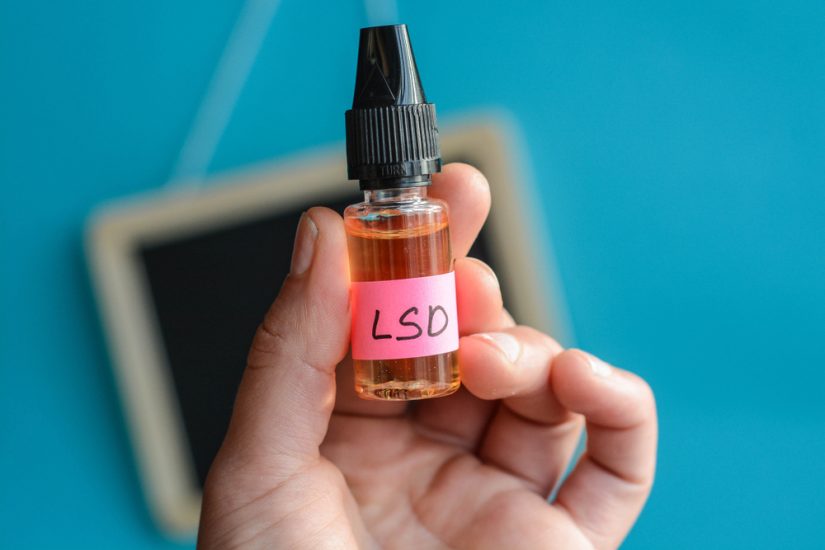- October 29, 2024
- by Shalini Murmu
- Addiction
- Shocking Reality Of Addiction Behind The Spotlight
- Addiction and Fame: A Toxic Dynamic
- Liam Payne And His Drug Addiction
- Payne's Addiction Treatment In 2023
- How Can You Help Your Loved Ones When They Exhibit Erratic Behavior Due To Substances?
- Understanding Addiction Treatment Options
- A Message of Hope
Liam Payne, the gifted artist from the famous boy band One Direction, sadly lost his life at just 31 years old on October 16, 2024. His body was found after he fell from the balcony of his hotel room at the CasaSur Palermo Hotel in Buenos Aires, Argentina. Reports suggest that the incident took place shortly after he displayed unusual behavior in the hotel lobby, which involved smashing his laptop and acting aggressively, leading the staff to call for emergency assistance.
One Direction, which was created on the British talent show The X Factor in 2010, quickly rose to stardom with popular songs like “What Makes You Beautiful” and “Story of My Life.” The band became a huge cultural icon, amassing a vast fanbase and selling millions of albums around the globe. However, following the group’s break in 2016, each member, including Payne, ventured into solo careers. Even though he found early success, Payne faced significant challenges with the pressures of fame, which eventually contributed to his struggles with substance abuse and mental health difficulties.
In the days prior to his passing, witnesses mentioned that Liam had been acting aggressively and erratically. He had been asked to leave another hotel in Buenos Aires because of his intoxicated state. Authorities discovered his hotel room in utter chaos, with signs of substance abuse, including remnants of white powder believed to be drugs.
The hotel staff contacted 911 after seeing his aggressive behavior and were particularly concerned regarding the safety risks associated with the balcony in his room. The mix of substance use and emotional distress likely led to a precarious state, making Liam susceptible to making a dangerous choice. Witnesses remarked that he appeared to be out of control, highlighting the depth of his mental and emotional struggles.
Shocking Reality Of Addiction Behind The Spotlight
When celebs go through tough times, everyone’s eyes are glued to them. Fans have this special bond with the stars they look up to, often seeing them as almost larger-than-life figures. The heartbreaking loss of a celebrity to addiction, like that of Liam Payne, serves as a jarring reminder: even those who are most celebrated and appear invulnerable can be ensnared by the cruel grip of substance abuse. These tragic losses are shocking and leave a lasting impact, showing us that addiction is a fierce enemy that doesn’t pick favorites.
When a prominent personality exits life, it often draws attention to topics that are commonly neglected. Incidents like these brings conversations to the forefront, raising awareness and making society more aware of the hidden battles that countless people both famous and not face daily. Liam Payne’s sudden departure left fans devastated, highlighting the intense pressures and emotional challenges associated with fame. It’s natural for people to ask, “How can someone so successful and loved end up in a mental health crisis?” But these seemingly straightforward questions actually highlight the complicated nature of addiction.
Addiction and Fame: A Toxic Dynamic
Fame is often viewed as the ultimate achievement, a reward for skill and dedication. But if you look closer, fame comes with hidden challenges that make addiction a real threat for many stars. For celebrities, the spotlight can feel like an “invisible cage,” where they’re admired and adored yet, ironically, feel incredibly alone and exposed. Fame magnifies both the positives and negatives, and when it’s linked to mental health issues or past traumas, it can turn into a hotbed for addiction. The truth is that the pressures and intricacies of fame often make mental health problems worse, leaving public figures feeling trapped, misunderstood, and eager for a way out.
One of the toughest parts of being famous is the constant pressure to maintain a flawless image. Celebs often have to keep their public selves separate from their private lives, hiding their vulnerabilities, doubts and struggles behind a mask of success and happiness. For someone like Liam Payne, who burst onto the scene as a young talent with tons of charm, the expectation to always be on point and in the spotlight could be way too much. This separation can lead to feelings of isolation, leaving people feeling unknown and invisible, even to those who claim to love them. The need to constantly perform creates a gap between who they really are and who they feel they should be, and it’s in this space that addiction often takes hold.
When someone’s whole identity is about making others happy and keeping up with expectations, their inner battles can seem pointless, like secrets they’re too embarrassed to talk about. Sadly, this emotional gap can push a lot of people into the world of substance abuse. Drugs and alcohol become a safe haven, a way to numb the endless pressure and fatigue that comes from being in the spotlight. The addiction kicks off gradually, usually flying under the radar, but before long, it turns into a way to cope with a lifestyle that’s just not sustainable, a sort of self-medication to handle a reality that feels way too tough to deal with.
Liam Payne And His Drug Addiction
Liam Payne faced some tough battles with addiction, which reportedly involved a range of drugs, including substances like “pink cocaine” and others found during the toxicology tests after his passing. The toxicology report suggested he had probably been using these harmful substances while staying at a hotel in Buenos Aires. Sources say he might have gotten the drugs from a hotel staff member, which could lead to an investigation into where they came from.
Payne’s challenges with addiction seemed to grow worse in the months before his death, fueled by a mix of substances and a rising dependency. His issues with drugs were allegedly made easier by having access to suppliers, including people working at the hotel. Reports state that Payne was asked to leave a Buenos Aires hotel because of disruptive behavior linked to his intoxication, just before the tragic event occurred at another venue. This pattern highlights the severe emotional strain and dangerous behaviors that often come with addiction, particularly in high-pressure situations like being in the spotlight.
1. List Of Drugs Found
Liam Payne’s fight with addiction included several powerful substances, each playing a significant role in his mental health challenges. Toxicology reports showed that he had multiple drugs in his system when at the time of his death, which included:
- Pink Cocaine: This is a hazardous mix often made up of methamphetamine, ketamine, and MDMA. While it can create euphoric feelings that make people feel invincible, it also heightens the chances of paranoia, anxiety, and aggressive behavior, leading to a cycle of emotional highs and lows.
- Crack Cocaine: Recognized for its immediate and intense euphoric effects, crack cocaine can quickly lead to addiction. Its use often brings about severe mental distress, like anxiety, depression, and even psychosis. The drug can amplify feelings of loneliness and despair, especially when the initial high wears off.
- Methamphetamine: This strong stimulant can significantly change mood and behavior. This substance is reputed to enhance stamina and focus, however, extended usage can lead to severe psychological challenges including stress, insomnia, and considerable mood swings. Users often hit a crash, plunging them into deep depression and hopelessness.
- Benzodiazepines: Typically prescribed for anxiety or sleep issues, these can also be very addictive. When taken alongside other substances, they can lead to dangerous interactions, worsening feelings of depression and anxiety, and possibly causing withdrawal symptoms that can be very tough to handle.
- Alcohol: Though not always mentioned in reports, Payne had talked before about his struggles with alcohol addiction, which can severely affect mental well-being. As a depressant, alcohol can worsen feelings of sadness and anxiety, creating a vicious cycle for someone already dealing with emotional difficulties.
2. Impact Of Substances On Liam Payne
In the chaotic moments before Liam Payne’s tragic passing, the state of his hotel room eerily mirrored his declining mental health. Reports pointed to signs of white powder, damaged furniture, and a broken TV, all amidst a backdrop of an alcohol bottle. The condition of his room vividly illustrated a man caught in a whirlwind of addiction and emotional distress.

The presence of white powder in his hotel room likely suggests the use of drugs like crack cocaine or methamphetamine, both of which can spark intense highs followed by significant psychological pain. Crack cocaine, noted for its immediate and formidable effects, can create in users a short-lived impression of strength. However, this is often succeeded by a harsh downturn, leading to profound feelings of sadness and loneliness. In Payne’s situation, the high from drug use might have turned into paranoia and anxiety, resulting in erratic actions and poor choices.
Methamphetamine, another substance mentioned in reports, has particularly alarming effects on mental health. It can lead to hallucinations and delusions, making the one to lose touch with reality. The disordered state of his surroundings, broken furniture, and a smashed television likely reflect the inner chaos he was going through. The overstimulation followed by an emotional crash can lead to a complete loss of control, making it hard for people to tell what’s real and what’s not.
Benzodiazepines mixed with stimulants can lead to dangerous interactions, increasing disorientation and confusion. As Payne indulged in these substances, he might have felt an intense desire to soothe himself but ended up sinking deeper into a pit of hopelessness and emotional numbness.
Payne’s Addiction Treatment In 2023
Liam was candid about his struggles with substance abuse in recent years, which led him to an addiction recovery center in Louisiana in 2023, where he spent almost 100 days getting treatment.
In a heartfelt video he posted for his fans, Liam talked about his rehab experience, admitting that he was in “bad shape” before he checked in. He realized he had lost sight of his true self and shared how that journey helped him take back control of his life.
While in rehab, he was completely isolated from the outside world, which really helped him concentrate on his recovery without any distractions. He mentioned that jumping back onto social media felt overwhelming since he had to confront the reality of his past actions.

Payne’s struggles with substance abuse reportedly included heavy drinking and using other deadly drugs. He shared how alcohol often became his go-to solution for dealing with the pressures of fame during his One Direction days, admitting that he frequently turned to drinking to cope. This dependency on substances led him into a dark phase where he battled intense suicidal thoughts and felt deeply disconnected from who he was. He recognized that his challenges were worsened by the fame and the public image he felt obligated to uphold, which often hid his inner struggles.
In interviews, Liam has shared that he realized he needed to make a change after seeing photos of himself that showed just how much substance abuse was affecting his appearance and mental health. This moment of self-awareness turned out to be a crucial point in his path to sobriety, inspiring him to reach out for help.
1. What Went Wrong Despite Seeking Treatment?
Liam Payne’s battles with addiction and mental health have continued to spark concerns, even after he sought help in 2023. Although he spent almost 100 days in rehab, the tricky nature of addiction often means that recovery isn’t a straight path; it can come with bumps, setbacks, and the risk of falling back into old habits.
2.Payne’s Addiction Relapse and Its Implications
- Complex Nature of Addiction: Addiction is a long-term condition that changes how the brain works and influences behavior. Even post-treatment, Payne might struggle with cravings, emotional triggers, and situations that encourage substance abuse. Experts in addiction say that relapse can happen even when someone is dedicated to their recovery because the condition has a lasting presence.
- Emotional and Environmental Triggers: Liam’s re-entry into the spotlight and the pressures of being famous could have served as major stressors. Facing public judgment, meeting fan expectations, and dealing with the emotional burden of past experiences can lead to anxiety and feelings of loneliness, which often set the stage for relapse. In various interviews, Liam has expressed feeling overwhelmed at times, which can easily push someone to look for peace through substances.
- Lack of Ongoing Support: Even though Liam sought help, returning to everyday life can be quite challenging. The support systems that are built during rehab might not be as strong once back in the real world. It’s really important for those recovering from addiction to have a solid support network, which includes counseling, peer support groups, and continuous therapy. A shortage of these resources can heighten the chances of relapse.
- Underlying Mental Health Issues: Liam has been candid about his mental health struggles, such as anxiety and depression. These underlying problems can make recovery from addiction even more complicated, as they might lead individuals back to substance use as a way to cope. Even after treatment, if these mental health issues aren’t properly addressed, the risk of relapse stays significant.
- The Challenge of Self-Recognition: After going through treatment, individuals often face a time of adjustment where they need to learn how to see themselves without substances. For Liam, this could have meant reconciling his past actions with his goal of living healthier. If this adjustment is tough, it can lead to feelings of not being good enough or failing, which may intensify the urge to turn to substances.
Ultimately, even though Liam Payne has taken impressive steps in seeking help and being open about his struggles, the recovery journey is rarely a simple one. The chance of relapse is always around, particularly in high-pressure settings like the entertainment world. Grasping these dynamics is key to nurturing empathy and support for those fighting addiction, reminding us that recovery is a continuous journey rather than a final goal.
How Can You Help Your Loved Ones When They Exhibit Erratic Behavior Due To Substances?
- Stay Calm: How you act can really affect what happens next. Keeping your cool and staying composed can help lower the tension. Use a gentle, steady tone when you speak, and try not to raise your voice or show frustration, as this might worsen their aggression. Your main focus should be on safety, both yours and theirs. Get rid of all items that could act as weapons and, if it’s crucial, head to a safe area to build a secure environment. If things feel threatening, do not hold back from reaching out for help.
- Set Clear Boundaries: You can gently let your loved one know that their actions aren’t okay and that you’re there to help, but they need to settle down first. It’s really important to communicate clearly about what behaviors are not acceptable.
- Listen and Validate: Sometimes, their actions come from deeper feelings. If you can, pay attention to what they’re expressing and acknowledge their emotions without agreeing with their behavior. Saying something like “I see that you’re really upset” can sometimes help to ease their anger.
- Encourage Professional Help: If they seem open to it, encourage them to get professional support. Let them know that help is out there and that you’re there for them in finding it. Avoid any confrontational approach, as that could provoke more aggression.
- Know When to Call for Help: If things escalate and your loved one gets physically violent, it’s crucial to prioritize safety and call emergency services. Mental health professionals know how to handle such situations and can offer the help that’s needed.
- After the Episode: Once the immediate crisis has passed, try to have a calm chat about what just happened. Share your concern for their well-being and encourage them to think about treatment options. Approach the discussion with understanding, emphasizing your intention to help rather than to blame.
Understanding Addiction Treatment Options
As we work through the challenges of addiction, it’s important to recognize that hope and strength can shine through even the toughest moments. For those dealing with substance abuse, whether personally or through someone they care about, there’s a journey ahead with a lot of promise for recovery. It’s vital to grasp that tackling substance abuse isn’t just a temporary fix but an ongoing journey toward a healthier and more satisfying life.
1.Inpatient Addiction Treatment
Inpatient substance abuse treatment creates a structured setting where individuals can concentrate exclusively on their recovery. This type of care is especially helpful for those facing serious addiction problems, mental health challenges, or a pattern of relapses. While they are there, individuals get round-the-clock support from medical staff and therapists. This setup reduces distractions and triggers, enabling patients to fully immerse themselves in their recovery journey.
- Detoxification: A supervised detox to safely handle withdrawal symptoms.
- Therapeutic Support: One-on-one therapy, group discussions, and family counseling to tackle underlying issues and encourage healing.
- Life Skills Training: Workshops focused on coping strategies, managing stress, and preventing relapse.
2. Outpatient Addiction Treatment
Outpatient substance abuse treatment provides flexibility for individuals who might not need the intensive care of an inpatient program. This option lets people carry on with their daily routines while attending scheduled therapy sessions. Outpatient programs can differ in intensity and length, making them appropriate for various recovery stages.
Key components of outpatient treatment may include:
- Counseling: Regular meetings with a therapist to discuss triggers, coping strategies, and personal challenges.
- Group Therapy: Sharing experiences and support from peers facing similar issues, creating a sense of community.
- Aftercare Planning: Crafting a personalized plan that outlines ongoing support resources and strategies for staying sober after treatment.
3. When to Seek Residential Treatment
Knowing when to consider residential addiction treatment is really important. Signs that might suggest the need for inpatient care include:
- Struggling to control substance use even after trying to cut back.
- Experiencing withdrawal symptoms.
- A background of severe substance abuse or repeated relapses.
- Co-occurring mental health issues that make recovery more complicated.
- If you find yourself or someone you care about facing these difficulties, reaching out to an addiction recovery center can be a crucial step.
A Message of Hope
Recovery from addiction is absolutely achievable, and this journey is all about resilience. It takes bravery to ask for help, whether through inpatient or outpatient options and to commit to the healing process. Having compassion, both for yourself and for others facing similar battles, is essential in this journey.
As you or your loved ones deal with the struggles of addiction, keep in mind that the right support is out there and can help you heal with healthy coping mechanisms. Substance abuse evaluations, dual diagnosis treatment centers, and opioid treatment programs can provide the necessary help. Asking for help is not a weakness; it reflects your courage and is an essential move toward regaining authority over your life.
In the midst of addiction, cling to the hope that recovery offers. With the necessary backing and therapy, a hopeful tomorrow is possible, teeming with opportunities for healing, relationships, and a renewed feeling of purpose.
Seek Help Today!
Are you or a loved one struggling with addiction? Don’t wait for addiction to take control of your life—take the courageous step towards recovery today! At North America Behavioral Health Services, we understand the overwhelming challenges that come with substance abuse, and we’re here to help.
We connect you with renowned addiction recovery centers that specialize in personalized treatment plans tailored to your unique needs located conveniently to you. Don’t let addiction dictate your future.
The path to recovery is within reach, and with our help, you can unlock the potential for a brighter tomorrow. Reach out to us today at North America Behavioral Health Services and take the first step towards a renewed self.
Ged rid of the shadows of addiction now!
















